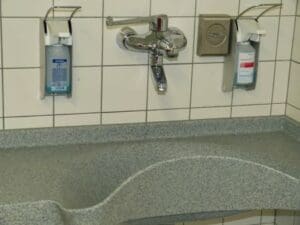

Sterilization has been a top priority for most businesses long before COVID-19 became a part of our everyday vocabulary. Since the pandemic, it seems that consumers are more interested than ever in a business’s sterilization protocols. Infections can occur in just about any setting from surgery centers to hospitals to chiropractic clinics. Of course, the odds are vastly different. For example, your chance of infection from a visit to your chiropractor is significantly lower than your chance of a Hospital Acquired Infection (HAI) from a surgery center.1 Experts attribute one of the main causes of infections as due to the lack of proper hygiene in healthcare settings. In addition to healthcare settings, one could argue the lack of proper hygiene and sterilization will cause infections in other settings such as tattoo shops and spas.


The CDC also states that sterilization of instruments and medical devices is compromised if the process is not preceded by meticulous cleaning.2 Therefore, the appropriate cleaning supplies are imperative to the safety and health of clients. In addition to proper bacteria disinfectants, the cleaner must be compatible with the materials used on the equipment to avoid breaks in integrity impairing either cleaning or disinfection/sterilization.


When available, single-use items are also recommended to further avoid cross-contamination. Some of those items include handle and equipment covers for equipment necessary for use on multiple patients such as that of an optometrists’ office. Headrest covers for dental chairs. Sterile, ready-to-use seamless stainless steel blades also provide a sterile blade and eliminate the need for re-sharpening and possible contamination from the sharpener.


Every industry has specific protocols necessary to protect consumers. To assure you are taking every sterilization protocol necessary for your patients and clients, Fort Smith Medical and Janitorial Supply has the product you need. Place your order online or call 800.632.7876 today to speak to a representative.
1,2 Source
